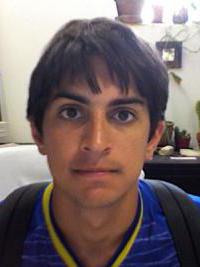Daniel Luna presented his PhD Defense entitled "Miocene mammals (Notoungulata) from the Laguna del Laja region, Andean Main Range, Central Chile" on March 11, 2015.
ABSTRACT:
The unique history of mammals in South America has long provided significant evolutionary and geological insights, but the continent’s fossil record is strongly biased toward the lowlands of Argentine Patagonia. Recent collecting efforts in the Andean Main Range of Chile, near Laguna del Laja (LdL) (~37.5º S, 71º W), have yielded a stratigraphically superposed series of early to late Miocene fossil mammal assemblages, shedding light on the poorly known extra-Patagonian history of South American Neogene mammals. Several hundred specimens have been recovered from the Cura-Mallín and overlying Trapa-Trapa formations at LdL. Nearly all of these fossils were collected from a well-described stratigraphic sequence that includes 17 high precision 40Ar/39Ar ages. This robust temporal framework encompasses fossiliferous horizons spanning ~20-9 Ma. Herein I provide a detailed account of the “hoofed” mammals from the Cura-Mallín Formation at LdL; these range in age from ~20-15 Ma (early to middle Miocene). Dentitions referred to Protypotherium praerutilum, a well-known but inadequately diagnosed species, motivated a long overdue (but preliminary) taxonomic revision. Occurrences of Protypotherium, Colpodon, and Astrapothericulus, together with radioisotopic ages, indicate that faunas spanning the Colhuehuapian and Santacrucian South American Land Mammal “Ages” (SALMAs) occur in direct stratigraphic superposition at LdL. These deposits have also yielded five new genera of typotherians (small-bodied notoungulates), and a new species of Colpodon (a larger-bodied, toxodontian notoungulate); this high level of endemism has also been noted among rodent faunas from LdL. The five new taxa described in this study are included in rigorous phylogenetic analyses of Interatheriinae and Hegetotheriinae (typotherian sub-clades), providing new hypotheses of morphological evolution within these clades, and documenting independent yet apparently simultaneous radiations of interatheriids and hegetotheriids with ever-growing (hypselodont) dentitions. A significant majority of fossils from LdL are small-bodied taxa represented by dental and cranial elements (e.g., rodents and typotherian notoungualtes). This size distribution is unusual compared to other well-known early Miocene faunas, and may reflect differential transport of skeletal elements in lahar-associated depositional settings. The high level of endemism across multiple SALMAs at LdL is also striking, particularly considering the geographic proximity of faunas from LdL with roughly coeval counterparts in neighboring regions of Argentina. This provinciality of the Andean faunas, relative to Argentine assemblages, likely reflects sampling of a regionally distinct and isolated paleoenvironment.

